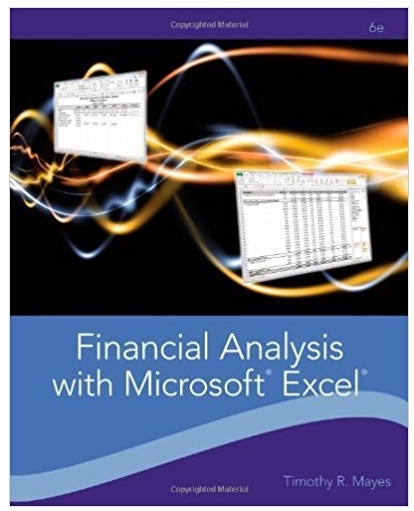As an investor, you are considering an investment in the bonds of the Front Range Electric Company.
Question:
As an investor, you are considering an investment in the bonds of the Front Range Electric Company. The bonds pay interest semiannually, will mature in eight years, and have a coupon rate of 4.5% on a face value of $1,000. Currently, the bonds are selling for $900.
a. If your required return is 5.75% for bonds in this risk class, what is the highest price you would be willing to pay? (Note: use the PV function.)
b. What is the current yield of these bonds?
c. What is the yield to maturity on these bonds if you purchase them at the current price?
d. If you hold the bonds for one year, and interest rates do not change, what total rate of return will you earn? Why is this different from the current yield and YTM?
e. If the bonds can be called in three years with a call premium of 4% of the face value, what is the yield to call on these bonds? (Note: use the RATE function.)
f. Now assume that the settlement date for your purchase would be 7/30/ 2011, the maturity date is 7/30/2019, and the first call date is 7/30/ 2014. Using the PRICE and YIELD functions recalculate your answers to parts a, c, and d.
g. If market interest rates remain unchanged, do you think it is likely that the bond will be called in three years? Why or why not?
h. Create a chart that shows the relationship of the bond's price to your required return. Use a range of 0% to 15% in calculating the prices.
CouponA coupon or coupon payment is the annual interest rate paid on a bond, expressed as a percentage of the face value and paid from issue date until maturity. Coupons are usually referred to in terms of the coupon rate (the sum of coupons paid in a... Face Value
Face value is a financial term used to describe the nominal or dollar value of a security, as stated by its issuer. For stocks, the face value is the original cost of the stock, as listed on the certificate. For bonds, it is the amount paid to the... Maturity
Maturity is the date on which the life of a transaction or financial instrument ends, after which it must either be renewed, or it will cease to exist. The term is commonly used for deposits, foreign exchange spot, and forward transactions, interest...
Step by Step Answer:

Financial Analysis with Microsoft Excel
ISBN: 978-1111826246
6th edition
Authors: Timothy R. Mayes, Todd M. Shank





